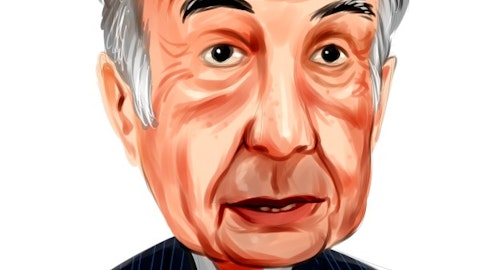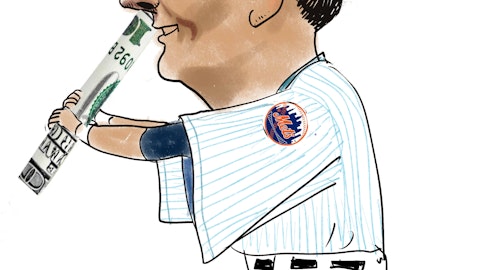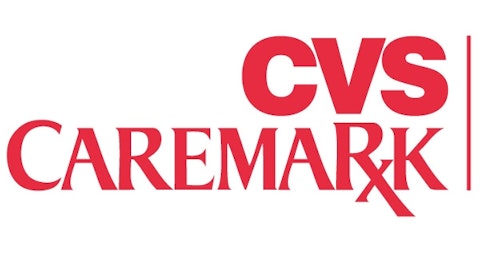Most investors usually associate insider trading with illegal transactions. In fact, insider trading can be either legal or illegal. Illegal insider trading usually refers to those insiders who trade directly on material non-public information. On the other hand, it is legal for corporate insiders, including officers, directors, and large shareholders of the company, to purchase or sell stocks of their own companies once the material information has been made public. When insiders trade on the stocks of their companies, they have to report their trades to SEC. We think insiders have an edge over ordinary investors. Even though they do not trade illegally, they understand their companies much better than other investors. In this article, we are going to take a closer look at a few stocks that insiders are buying recently.

Valeant Pharmaceuticals (VRX): Bradley Howard Schiller, EVP and CFO at VRX, purchased 9300 shares of VRX at $53.4717 per share at the beginning of March. One day later, Schiller bought another 9300 shares at $53.8107. VRX was closed at $53.86 on March 6, up 0.73% from the price at which Schiller bought on March 1. During the same period, the S&P 500 index was down more than 2%. VRX was a popular stock among hedge funds tracked by us. At the end of last year, there were 45 hedge funds reported to own VRX in their 13F portfolios. For example, Andreas Halvorsen’s Viking Global had over $300 million invested in VRX at the end of 2011.
VRX has a very successful acquisition program. It is planning to acquire Dermik and Ortho Dermatologics. It has also signed an agreement to acquire Australian drug-maker iNova, which is very likely to boost its sales in Australia, while its sales in Eastern Europe will increase by its planned acquisition of AB Sanitas. These acquisitions will not only bring stronger sales, revenues, and operating synergies, but also lead to a more diversified portfolio of products and geographic footprints. The strong growth potential brought by the acquisition plan explains the high current P/E ratio of the company. VRX made $0.49 per share in 2011 and it is currently trading at above $50 per share. Therefore, its current P/E ratio is over 100. However, thanks to its acquisition program, it is expected to earn $4.13 per share in 2012. So its forward P/E ratio is about 13, versus 16.04 for the average of its peers. The main competitor of VRX, Perrigo Co (PRGO), has a forward P/E ratio of above 20. We like VRX and we think the company’s target price should be about 15X its EPS in 2012.
Rayonier Inc (RYN): On March 2, Director David Brown purchased 17,000 shares of RYN at $44.26 per share. RYN was closed at $44.50 on March 6, up 0.54% from the price Brown purchased at. During the same period, the market was down 1.86%. There were also a few hedge funds bullish about RYN. As of December 31, 2011, there were 12 hedge funds reported owning RYN in their 13F portfolios. For instance, Jim Simons’ Renaissance Technologies had over $50 million invested in RYN. Jean-Marie Eveillard, Chuck Royce, and Glenn Russell Dubin were also bullish about RYN.
RTN is an international forest products company operating under the REIT corporate structure. We think RTN will generate strong revenues in its cellulose specialties segment as we expect higher prices and volume due to strong demand for these products. On the other hand, the price and volume of fluff pulp are expected to be lower in the year ahead. Therefore, we like the company’s strategy of converting fluff pulp capacity to cellulose specialties. We also think its timber business will grow modestly with strong demand for lumber in China, while its real estate margins will be lower this year. However, we are optimistic about RTN’s real estate business as the company owns land in the Southeast and we expect it to extract value from it over the long term. RYN is expected to earn $2.13 in 2012, so its forward P/E ratio is 20.9. The average forward P/E ratio for its peers is about 22. The stock seems a little bit undervalued compared to its peers but it doesn’t have high growth rates. Its earnings are estimated to grow at about 7% per year over the long term. Either the analysts are underestimating this company’s potential or the insider is too optimistic.
Cracker Barrel Old Country Store (CBRL): This is the largest insider purchase reported to SEC on March 7. Sardar Biglari, one of the large shareholders of the company, purchased 47656 shares of CBRL at $54.8346 on March 6 and another 36200 shares at $54.89 per share on March 5. CBRL was closed at $55.32 per share on March 8, up 1.35% from the price Biglari bought at on March 6. During the same period, the S&P 500 index returned 1.70%. It seems that the market has not completely responded to Biglari’s purchase yet.
CBRL has a current P/E ratio of 15.72, versus 28 for the average of its peers. For the 13 weeks ending January 27, 2012, the company reported revenue of $673.23 million, up from 640.28 million for the same period a year ago. The 5.1% revenue increase was still lower than the industry average of 14.1%. CBRL’s net income was also declined by 11% to $25.61 million. Over the past year, CBRL has suffered from a pattern of deteriorating earnings per share. That’s why it is trading at a discount to its peers. However, we expect the declining earnings trend will be reversed in the year ahead. In 2012, we expect CBRL to make $4.31 per share, up from $3.60 per share for 2011. Therefore, CBRL’s forward P/E ratio is about 12.84, still lower than the industry average of 22. In 2013, CBRL is expected to earn $4.66 per share and its earnings are expected to grow at an average of 10+% annually in the next couple of years.
Corning Inc (GLW): GLW is the second-largest insider purchase reported on March 7. Director Gordon Gund bought 150,000 shares of GLW at $12.7486 per share on March 6. Now GLW is trading at $13.41 per share, up 5.2% from the price at which Gund purchased. The market was up 1.7% over the same period and GLW outperformed the market by 3.5% in two days. GLW was quite popular among hedge funds tracked by us. At the end of last year, there were 43 hedge funds with GLW positions in their 13F portfolios. For instance, Lee Ainslie was the most bullish hedge fund manager about GLW. His Maverick Capital had nearly $300 million invested in this stock at the end of 2011. Richard Chilton and Jim Simons were also bullish about GLW.
GLW is trading at low multiples. Its current P/E ratio is 7.58, a significant discount to the 18 for the average of its peers. In order to increase the demand for its display glass, GLW is currently taking various actions such as lowering prices. Together with some inventory building by customers, the price reduction explains the low P/E ratio of GLW as it will hurt GLW’s profitability and reduce margins. However, we think the negative influence will only be short term. Moreover, we think the impact of pricing cuts will be partly offset by the strong growth in the company’s environmental and telecom segments. Revenues in both segments grew by over 20% in the past year and we expect further growth in both segments in the next couple of years. In 2012, GLW is expected to earn $1.36 per share, so its forward P/E ratio is about 9.86, still a significant discount to the industry average of 15. The company’s earnings are expected to grow at an average of 8.5% per year in the following few years.
We like GLW. The company increased its dividend payouts by 50% over the past year. Currently it has a dividend yield of 2.24%. Moreover, the company also announced a new $1.5 billion share repurchase program last year. The stock buyback authorization will expire at the end of 2013. We think GLW has enough cash and equivalents to support its growing dividends and share repurchase program. At the end of 2011, the company had $5.8 billion of cash and short-term investments and $2.4 billion of debt, most of which will not mature before 2017.





